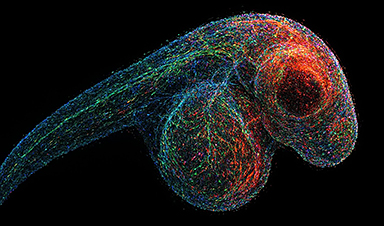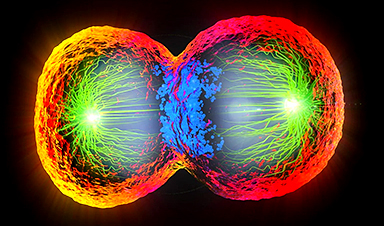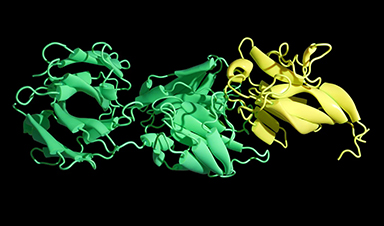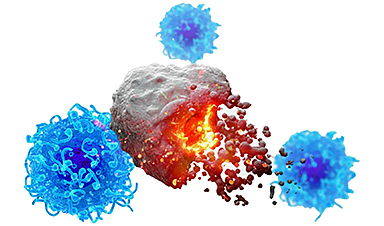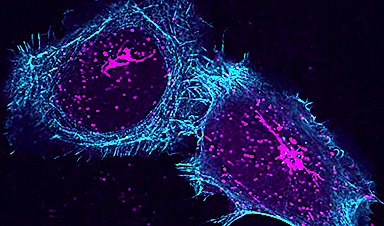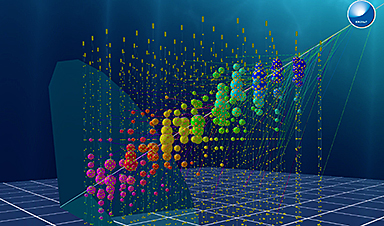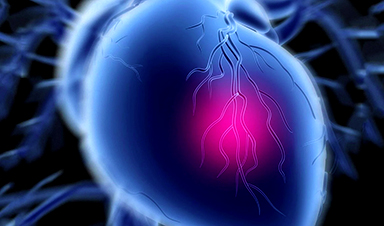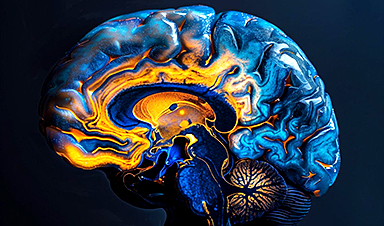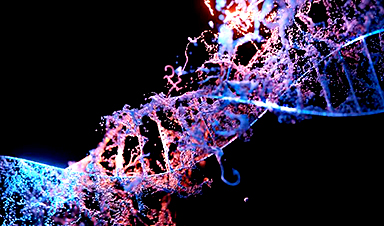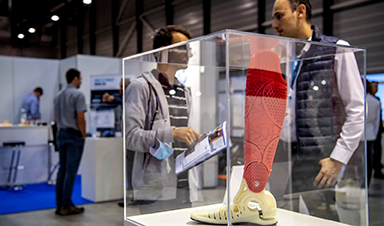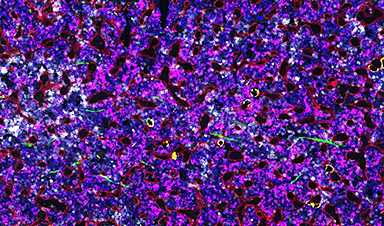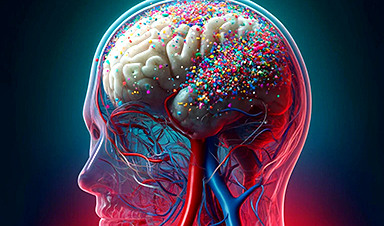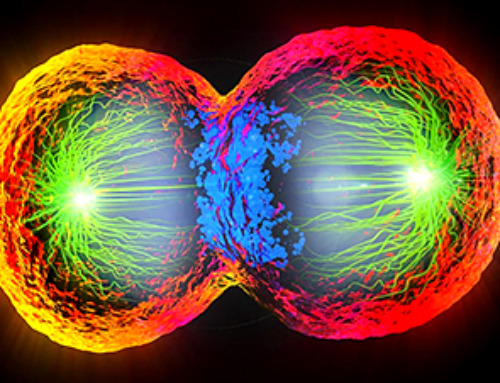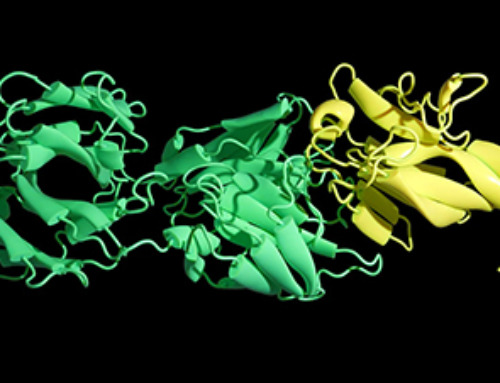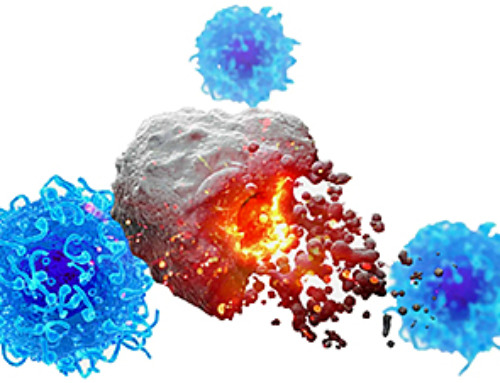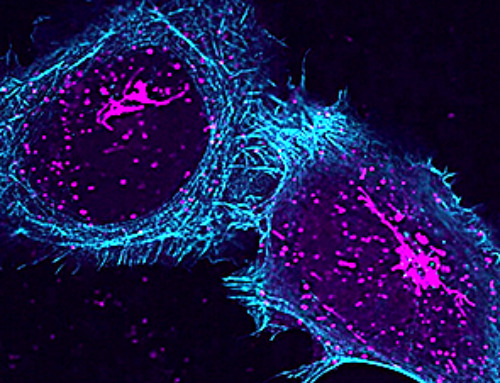| Using nanopore DNA sequencing technology, researchers from TU Delft and the University of Illinois have managed to scan a single protein: by slowly moving a linearized protein through a tiny nanopore, one amino acid at the time, the researchers were able to read off electric currents that relate to the information content of the protein. | |
| The researchers published their proof-of-concept in Science (“Multiple re-reads of single proteins at single-amino-acid resolution using nanopores”). The new single-molecule peptide reader marks a breakthrough in protein identification, and opens the way towards single-molecule protein sequencing and cataloguing the proteins inside a single cell. |
| Proteins are the workhorses of our cells, yet we simply don’t know what proteins we all carry with us. A protein is a long peptide string made of 20 different types of amino acids, comparable to a necklace with different kinds of beads. From the DNA blueprint, we are able to predict of which amino acids a protein consists. | |
| However, the final protein can greatly differ from the blueprint, for example due to post-translational modifications. Current methods to measure proteins are expensive, limited to large volumes, and they cannot detect many rare proteins. | |
| With nanopore-based technology, one is already able to scan and sequence single DNA molecules. The team led by Cees Dekker (TU Delft) now adapted this technique to instead scan a single protein, one amino acid at a time. | |
| “Over the past 30 years, nanopore-based DNA sequencing has been developed from an idea to an actual working device,” Cees Dekker explains. “This has even led to commercial hand-held nanopore sequencers that serve the billion-dollar genomics market. In our paper, we are expanding this nanopore concept to the reading of single proteins. This may have great impact on basic protein research and medical diagnostics.” | |
Like beads down the drain |
|
| The new technique reveals characteristics of even single amino acids within a peptide, but how? Lead author of the paper Henry Brinkerhoff, who pioneered this work as a postdoc in Dekker’s lab, explains: “Imagine the string of amino acids in one peptide molecule as a necklace with different-sized beads. Then, imagine you turn on the tap as you slowly move that necklace down the drain, which in this case is the nanopore. If a big bead is blocking the drain, the water flowing through will only be a trickle; if you have smaller beads in the necklace right at the drain, more water can flow through. With our technique we can measure the amount of water flow (the ion current actually) very precisely.” | |
| Cees Dekker enthusiastically adds: “A cool feature of our technique is that we were able to read a single peptide string again and again: we then average all the reads from that one single molecule, and thus identify the molecule with basically 100% accuracy.” | |
| This results in a unique read-off which is characteristic for a specific protein. When the researchers changed even one single amino acid within the peptide (‘a single bead within the necklace’), they obtained very different signals, indicating the extreme sensitivity of the technique. The group led by Alek Aksimentiev at the University of Illinois performed molecular dynamics simulations that showed how the ion current signals relate to the amino acids in the nanopore. | |
Scanning the barcode for identification |
|
| The new technique is very powerful for identifying single proteins and mapping minute changes between them – much like how a cashier in the supermarket identifies each product by scanning its barcode. It also may provide a new route towards full de novo protein sequencing in the future. | |
| Henry Brinkerhoff clarifies: “Our approach might lay a basis for a single-protein sequencer in the future, but de novo sequencing remains a big challenge. For that, we still need to characterize the signals from a huge number of peptides in order to create a ‘map’ connecting ion current signals to protein sequence. Even so, the ability to discriminate of single-amino-acid substitutions in single molecules is a major advance, and there are many immediate applications for the technology as it is now…..” |
News
DNA Microscopy Creates 3D Maps of Life From the Inside Out
What if you could take a picture of every gene inside a living organism—not with light, but with DNA itself? Scientists at the University of Chicago have pioneered a revolutionary imaging technique called volumetric DNA microscopy. It builds [...]
Scientists Just Captured the Stunning Process That Shapes Chromosomes
Scientists at EMBL have captured how human chromosomes fold into their signature rod shape during cell division, using a groundbreaking method called LoopTrace. By observing overlapping DNA loops forming in high resolution, they revealed that large [...]
Bird Flu Virus Is Mutating Fast – Scientists Say Our Vaccines May Not Be Enough
H5N1 influenza is evolving rapidly, weakening the effectiveness of existing antibodies and increasing its potential threat to humans. Scientists at UNC Charlotte and MIT used high-performance computational modeling to analyze thousands of viral protein-antibody interactions, revealing [...]
Revolutionary Cancer Vaccine Targets All Solid Tumors
The method triggers immune responses that inhibit melanoma, triple-negative breast cancer, lung carcinoma, and ovarian cancer. Cancer treatment vaccines have been in development since 2010, when the first was approved for prostate cancer, followed [...]
Scientists Uncover Hidden Protein Driving Autoimmune Attacks
Scientists have uncovered a critical piece of the puzzle in autoimmune diseases: a protein that helps release immune response molecules. By studying an ultra-rare condition, researchers identified ArfGAP2 as a key player in immune [...]
Mediterranean neutrino observatory sets new limits on quantum gravity
Quantum gravity is the missing link between general relativity and quantum mechanics, the yet-to-be-discovered key to a unified theory capable of explaining both the infinitely large and the infinitely small. The solution to this [...]
Challenging Previous Beliefs: Japanese Scientists Discover Hidden Protector of Heart
A Japanese research team found that the oxidized form of glutathione (GSSG) may protect heart tissue by modifying a key protein, potentially offering a novel therapeutic approach for ischemic heart failure. A new study [...]
Millions May Have Long COVID – So Why Can’t They Get Diagnosed?
Millions of people in England may be living with Long Covid without even realizing it. A large-scale analysis found that nearly 10% suspect they might have the condition but remain uncertain, often due to [...]
Researchers Reveal What Happens to Your Brain When You Don’t Get Enough Sleep
What if poor sleep was doing more than just making you tired? Researchers have discovered that disrupted sleep in older adults interferes with the brain’s ability to clean out waste, leading to memory problems [...]
How to prevent chronic inflammation from zombie-like cells that accumulate with age
In humans and other multicellular organisms, cells multiply. This defining feature allows embryos to grow into adulthood, and enables the healing of the many bumps, bruises and scrapes along the way. Certain factors can [...]
Breakthrough for long Covid patients who lost sense of smell
A breakthrough nasal surgery has restored the sense of smell for a dozen long Covid patients. Experts at University College London Hospitals NHS Foundation Trust successfully employed a technique typically used for correcting blocked nasal passages, [...]
Scientists Invent Plastic That Can Dissolve In Seawater In Just A Few Hours
Plastic waste and pollution in the sea have been among the most serious environmental problems for decades, causing immense damage to marine life and ecosystems. However, a breakthrough discovery may offer a game-changing solution. [...]
Muscles from the 3D printer
Swiss researchers have developed a method for printing artificial muscles out of silicone. In the future, these could be used on both humans and robots. Swiss researchers have succeeded in printing artificial muscles out [...]
Beneficial genetic changes observed in regular blood donors
Researchers at the Francis Crick Institute have identified genetic changes in blood stem cells from frequent blood donors that support the production of new, non-cancerous cells. Understanding the differences in the mutations that accumulate [...]
Shocking Amounts of Microplastics in the Brain – It Could Be Increasing Our Risk of Dementia
The brain has higher concentrations of plastic particles compared to other organs, with increased levels found in dementia patients. In a comprehensive commentary published in Brain Medicine, researchers highlight alarming new evidence of microplastic accumulation [...]
Baffling Scientists for Centuries: New Study Unravels Mystery of Static Electricity
ISTA physicists demonstrate that contact electrification depends on the contact history of materials. For centuries, static electricity has intrigued and perplexed scientists. Now, researchers from the Waitukaitis group at the Institute of Science and [...]

